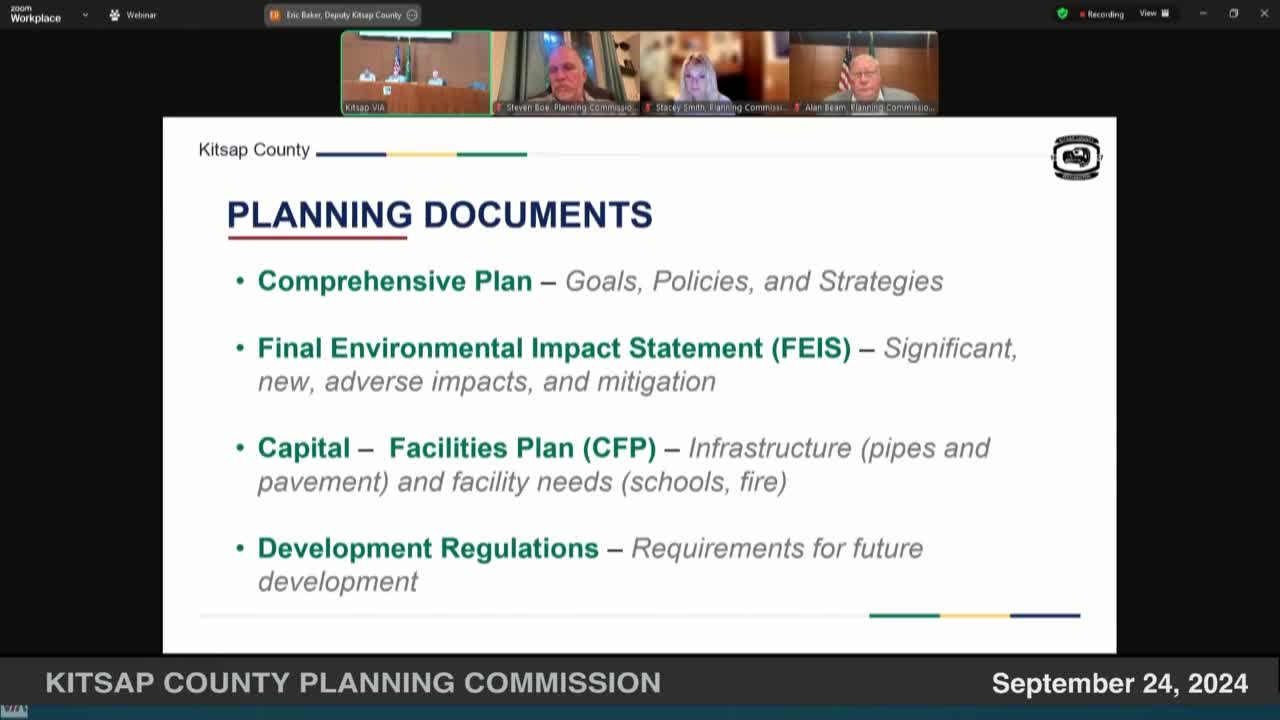Kitsap County plans bold housing and climate resilience overhaul
September 24, 2024 | Kitsap County, Washington
This article was created by AI summarizing key points discussed. AI makes mistakes, so for full details and context, please refer to the video of the full meeting. Please report any errors so we can fix them. Report an error »

In a recent government meeting, officials outlined a comprehensive 20-year capital facilities plan aimed at addressing the growing needs of Kitsap County, particularly in light of increasing population and environmental challenges. The plan, which spans from 2024 to 2044, emphasizes the importance of infrastructure, including water systems, schools, and emergency services, to support families moving into the area.
Key discussions focused on the necessity of enhancing housing diversity to accommodate various income levels. Current zoning regulations are being revised to promote the development of multifamily housing, townhomes, and accessory dwelling units, with a target of creating approximately 83,100 new housing units over the next two decades. This is a significant increase from the 2,000 units currently permitted, reflecting a shift towards more inclusive housing strategies.
Climate change was another critical topic, with officials acknowledging Kitsap County's vulnerability to rising sea levels and flooding. Plans are being developed to bolster infrastructure resilience, particularly for sewer systems and roadways located near waterways. The county aims to implement greenhouse gas emission reduction goals while enhancing urban green spaces through tree canopy initiatives.
The meeting also highlighted the importance of transforming regional centers, such as downtown Silverdale, into vibrant, mixed-use communities where residents can live, work, and play without reliance on single-occupancy vehicles. Proposed changes include increasing building heights and densities, allowing for more efficient land use and improved public transit options.
Overall, the discussions underscored a proactive approach to urban planning, focusing on sustainable development, environmental resilience, and the creation of diverse housing options to meet the needs of a growing population.
Key discussions focused on the necessity of enhancing housing diversity to accommodate various income levels. Current zoning regulations are being revised to promote the development of multifamily housing, townhomes, and accessory dwelling units, with a target of creating approximately 83,100 new housing units over the next two decades. This is a significant increase from the 2,000 units currently permitted, reflecting a shift towards more inclusive housing strategies.
Climate change was another critical topic, with officials acknowledging Kitsap County's vulnerability to rising sea levels and flooding. Plans are being developed to bolster infrastructure resilience, particularly for sewer systems and roadways located near waterways. The county aims to implement greenhouse gas emission reduction goals while enhancing urban green spaces through tree canopy initiatives.
The meeting also highlighted the importance of transforming regional centers, such as downtown Silverdale, into vibrant, mixed-use communities where residents can live, work, and play without reliance on single-occupancy vehicles. Proposed changes include increasing building heights and densities, allowing for more efficient land use and improved public transit options.
Overall, the discussions underscored a proactive approach to urban planning, focusing on sustainable development, environmental resilience, and the creation of diverse housing options to meet the needs of a growing population.
View full meeting
This article is based on a recent meeting—watch the full video and explore the complete transcript for deeper insights into the discussion.
View full meeting
